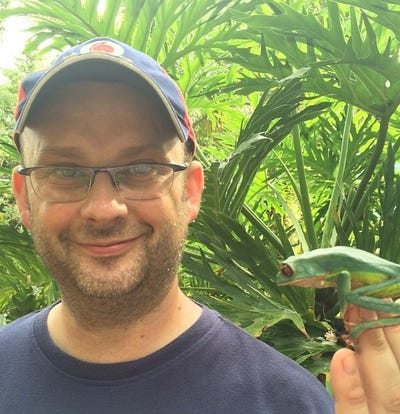How Frog Foam Can Deliver Antibiotics
March 29, 2016
Scientists discover a foamy substance made by Trinidadian frogs that could provide a non-toxic antibiotic delivery system, which could help treat and prevent the spread of infections.
Kristopher Sturgis
 The discovery was presented at the Microbiology Society's annual conference in Liverpool last week, detailing a substance that Tungara frogs (Engystomops pustulosus) produce while mating that contains protein that they beat into a foamy substance with their back legs. The frogs then use this foam to nest their eggs in to protect them from harmful bacteria, diseases, and environmental stresses.
The discovery was presented at the Microbiology Society's annual conference in Liverpool last week, detailing a substance that Tungara frogs (Engystomops pustulosus) produce while mating that contains protein that they beat into a foamy substance with their back legs. The frogs then use this foam to nest their eggs in to protect them from harmful bacteria, diseases, and environmental stresses.
A research team at the University of Strathclyde in Glasgow began analyzing the foam and found that it is highly stable and can be used as a drug delivery system that can release drugs at a steady rate. Paul Hoskisson (pictured), senior lecturer at the university and team leader on the research, says that the foam makes an ideal substance for drug-delivery given its stability in nature.
"We became interested in potential applications of frog foam from the nests of these frogs given their stability in the natural environment," he said. "We collaborated with some researchers from the University of Glasgow who have worked on these proteins for a while, and we began looking at the biophysical and antimicrobial properties of the foam from a few species who make these nests. We noticed that they resemble some materials that have been used for drug delivery, so we tried loading the frog produced foams with drug mimics (hydrophobic and hydrophilic dyes) to look at the release. We then moved to looking at antibiotic release, and we are currently close to making synthetic frog foams in the lab."
Hoskisson says that stable foams are rare in biology, as most foams are usually reduced to denatured proteins. However, this naturally produced foam from the Tungara frog is comprised of 7-8 different proteins that combine to form a stable foam in the environment, making the foam an ideal vessel for drug delivery.
"The bubbles in the foam are largely comprised of water, so it can be loaded with drugs fairly easily and then diffuse out over a period of time," Hoskisson says. "We have worked mainly with vancomycin, and this is released over a 24-48 hour period. We are still elucidating the exact mechanism, but it appears to be a simple diffusion mechanism."
Due to the increased usage of antibiotics, new technologies have been springing up in recent months as researchers continue to address the growing need for alternative treatments for infection. Earlier this year researchers from Bath University in the UK developed a new 'smart' bandage that could detect potential wound infections before the need for antibiotic treatment. In a similar vein, Hoskisson says that this new foam treatment isn't designed to circumvent the need for antibiotics, but rather provide an antibiotic drug delivery system that can be more efficient.
"The foam will not replace antibiotics," he says. "But it can help deliver them to infections that are often difficult to treat, such as burns. The foams appear to be very versatile and can be loaded with a range of drugs, so these may find applications in a range of pharmaceuticals, but there is still a large amount of basic work to be done."
Hoskisson says that he and his team are still in the process of expressing all of the proteins in E. coli which can enable them to make an entirely synthetic version of the foam, which could expand the wound healing models using cell lines. Despite it being very early in the process, he says the potential for the foam remains very promising.
"The work is still in a very early stage," he says. "There is still a need to biochemically characterize all of these proteins with our collaborators from the University of Glasgow, but these naturally occurring proteins appear to have great potential."
Learn more about cutting-edge medical devices at BIOMEDevice Boston, April 13-14, 2016. |
Like what you're reading? Subscribe to our daily e-newsletter.
About the Author(s)
You May Also Like


